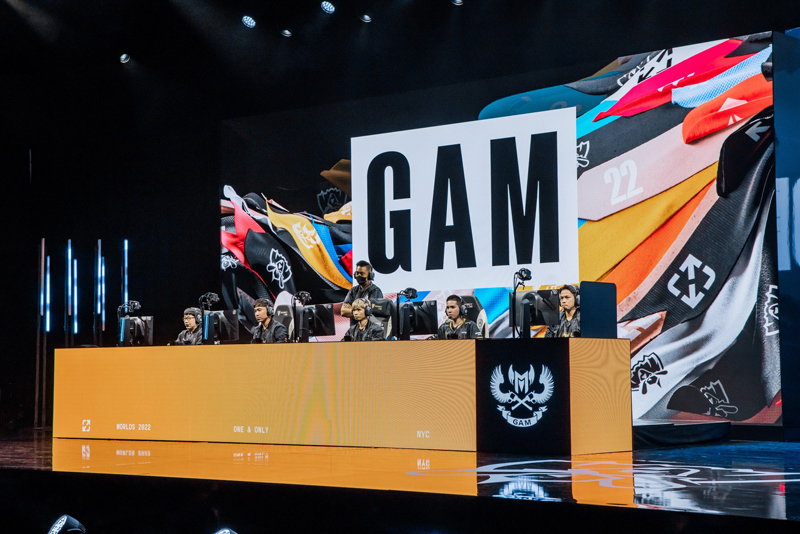
As video games become increasingly popular, esports is gaining attention from investors, brands, media, and consumers, making the esports ecosystem. In the year 2022, there were 532 million esports viewers worldwide.
That shift has been powered by championing from mainstream celebrities like Michael Jordan, Drake, and DJ Marshmello, an increasing amount of coverage from traditional outlets like ESPN, and, at least in part, the breakneck rise of Fortnite.
Esports Industry Market Growth Trends
As competitive video games continue to integrate into popular culture, global investors, brands, and media outlets are all paying attention. Consumers are as well. In fact, Insider Intelligence estimates esports viewers in the US will total 29.8 million in 2022—eventually climbing to 34.8 million in 2026.
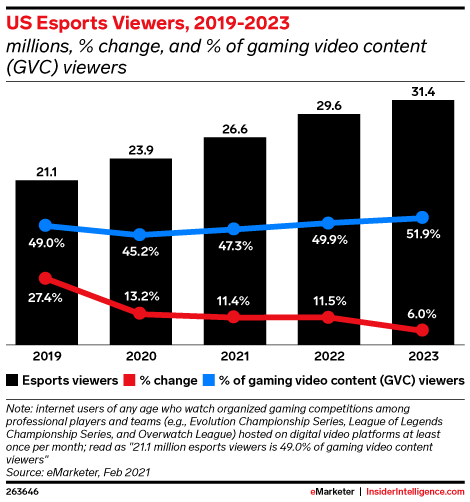
The pop-culturization of the esports industry has helped power the explosions in esports investment and revenue. Esports has hit this stratosphere in large part because of the social component of live streaming and gaming. Video gaming-specific streaming platforms like Twitch and YouTube Gaming give fans a direct connection to the players and teams, while more mainstream socials have allowed those connections to flourish. Certain esports organizations, like FaZe Clan, are also moving aggressively into areas like merchandise, lending their brands more notoriety than if they’d stuck to esports alone.
Rick Yang, partner at NEA – a venture capital firm that invests in esports—underscored this: “I actually think of esports as the mainstreaming of gaming or the pop culture instantiation of gaming versus the pure idea of these players becoming professionals to compete at the highest levels”.

Rick Yang, partner at NEA
It’s essential to think of the esports opportunity in this way—one inclusive of gaming, media, pop culture, and commerce—as it shines a light on opportunities beyond gaming events alone.
Esports Industry Revenue Stream Stats
As a result, the industry has seen a huge uptick in investment from venture capitalists, and more recently from private equity firms. The number of investments in esports doubled in 2018, going from 34 in 2017 to 68 in 2018, per Deloitte. That’s reflected in the total dollars invested, too: Investments are up to $4.5 billion in 2018 from just $490 million the year before, a staggering YoY growth rate of 837%, per Deloitte. These investments are distributed to players across the ecosystem—from esports organizations, to tournament operators, to digital broadcasters—allowing it to function and grow.
The net result is that esports has matured from its roots in arcade gaming to the complex digital ecosystem it is today.
Esports Teams and Advertising
Just like traditional professional sports, esports teams have owners, franchises, endorsement deals, cash prizes from tournament winnings, and more—all contributing to their annual revenue and total valuation. When the pandemic subsides, esports leagues will likely resume their efforts to expand their audiences by hosting live gameplay with regional esports teams in a way that will more closely mimic traditional sports leagues.
As of 2020, the top five most valuable esports teams according to Forbes are:
TSM – Value: $540 million

- 2021 Estimated Revenue: $56 million
- Change From 2020: 32%
- Principle Owner: Andy Dinh
100 Thieves – Value: $460 million
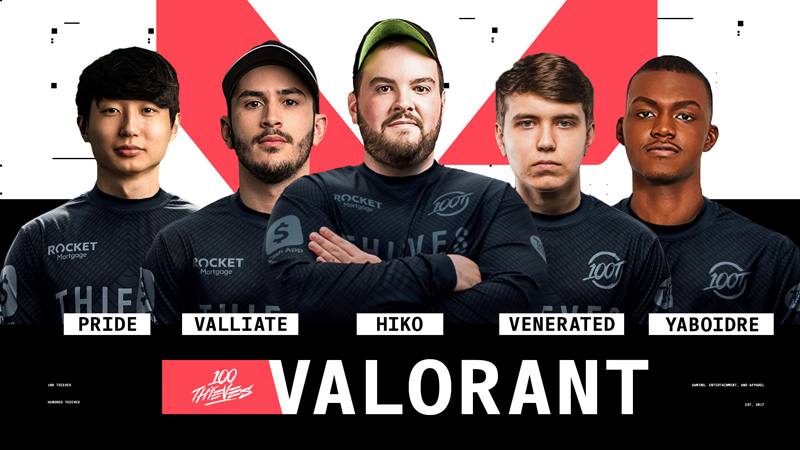
- 2021 Estimated Revenue: $38 million
- Change From 2020: 142%
- Principle Owners: Matthew Haag, Drake, Scooter Braun, Dan Gilbert, Rachell Hofstetter, Jack Dunlop
Team Liquid – Value: $440 million
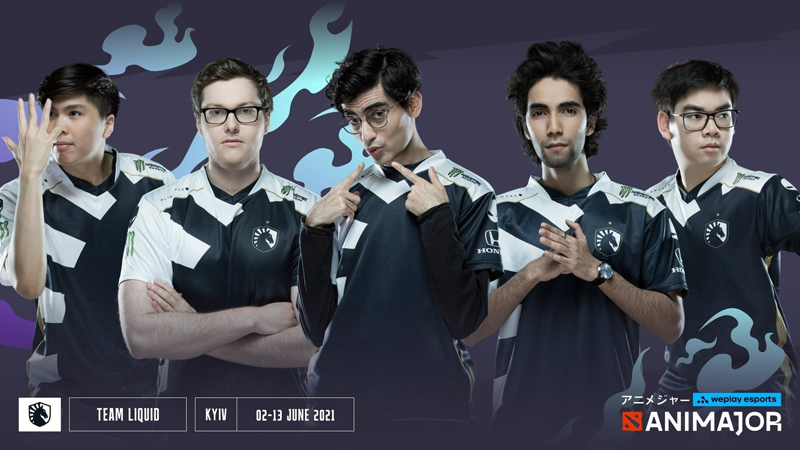
- 2021 Estimated Revenue: $38 million
- Change From 2020: 42%
- POwners: aXiomatic Gaming, Victor Goossens, Steve Arhancet
FaZe Clan – Value: $400 million

- 2021 Estimated Revenue: $40 million
- Change From 2020: 31%
- Principle Owners: Lee Trink, Michael Stang Treschow, Yousef Abdelfattah, Richard Bengston, Thomas Oliveira, Nordan Shat
Cloud9 – Value: $380 million

- 2021 Estimated Revenue: $35 million
- Change From 2020: 9%
- Principle Owners: Jack and Paullie Etienne
Understanding the Esports Ecosystem
Most projections put the esports ecosystem on track to surpass $1 billion in revenue for the first time this year. And revenue is expected to grow from here – Newzoo projects it to hit $1.8 billion by 2022. Money flows into esports through media rights, live event ticket sales, merchandise sales, and in-game purchases, but most of the revenue (69%) comes from sponsorships and advertising, per Newzoo figures cited by Statista.
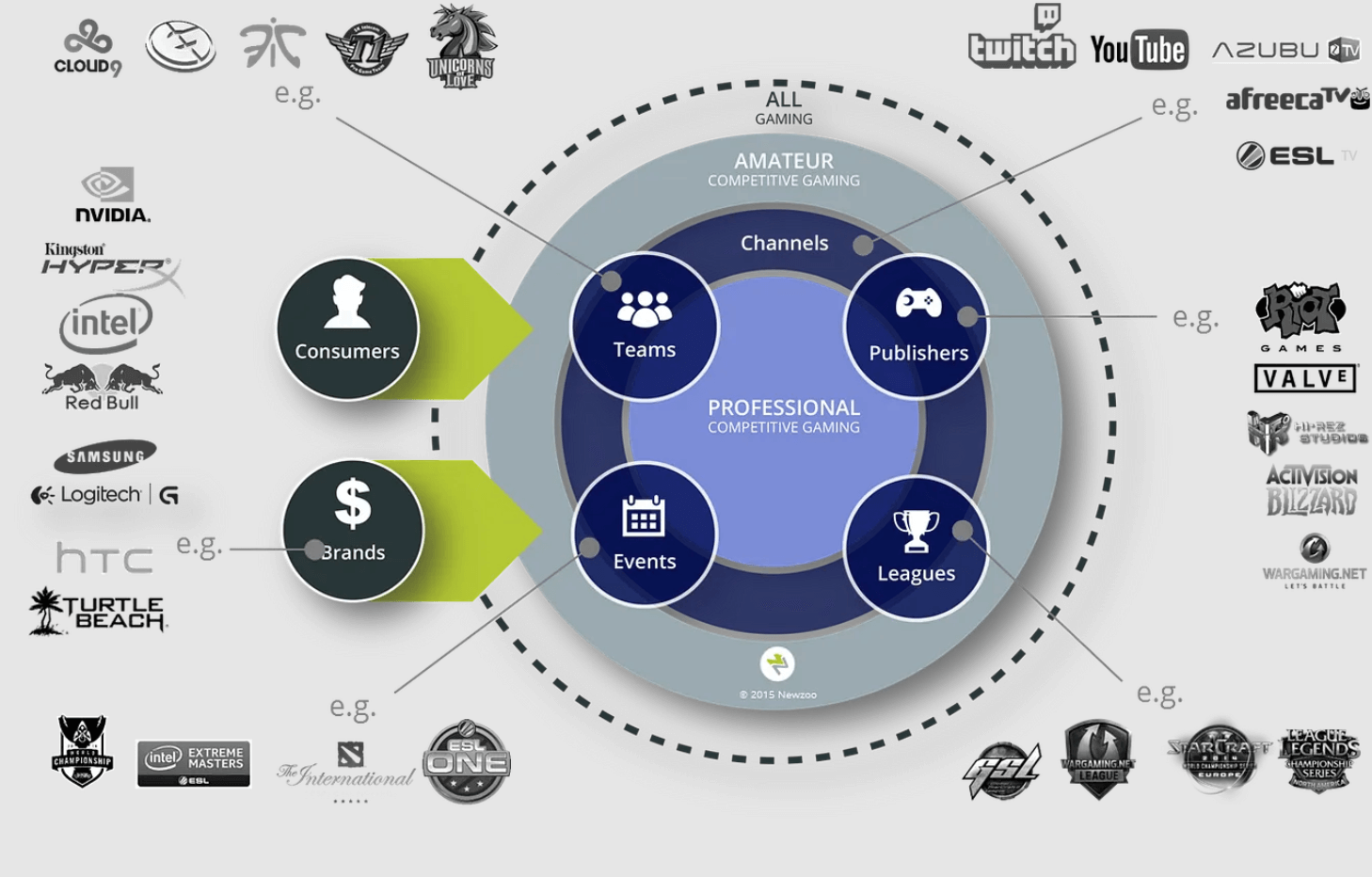
That growing revenue stream comes from around the world:
- Asia-Pacific (APAC), North America, and Europe are the top three esports markets, respectively, in terms of audience and revenue. APAC will account for over half (57%) of global esports viewership in 2019, up from 51% in 2017, per Newzoo. Meanwhile, North America is set to hit $300 million in esports revenue this year, while Europe is expected to reach $138 million, per PwC estimates.
- The rest of the world only accounts for about 15% of total esports revenue, but it contains several regions to watch. One of the fastest-rising regions is Latin America, which is expected to hit $18 million in esports revenue in 2019 before skyrocketing to $42 million by 2023, per PwC estimates.
- The future of the esports industry will likely be powered by mobile, which will further reduce barriers to entry and allow even more gamers and fans to pour in. The mobile gaming segment is set to make up 45% of the total global games market this year. That popularity is already spilling over into some competitive spaces, as China already has a thriving mobile esports scene.
Source: www.insiderintelligence.com





